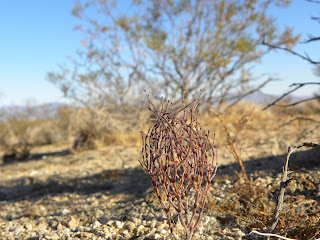Here is a brief overview of the industrial transformation proposed for the Mojave and Colorado Deserts in Southern California. A couple of the projects will only have a minimal impact on the desert ecosystem because they are sited on former agricultural land (Beacon and Abengoa Solar). The rest will contribute to the fragmentation and deterioration of desert ecosystems. The list is not comprehensive, but the combined impact would be over 30,000 acres of desert habitat. That is over 46 square miles, or the equivalent of 8 LAX airports. California's desert ecosystems are already under strain due to urban growth, military usage, invasive species, off-highway vehicle use, and climate change. Ironically, "green"energy could place unprecedented levels of stress on the desert as the majority of the projects listed below will break ground before the end of this year. Unfortunately, the list below is just the beginning, since dozens of additional applicati...





